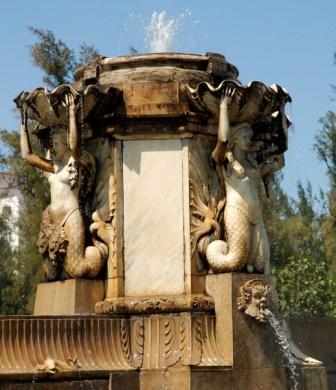Havana’s Miramar
By Dmitri Prieto

Miramar is a neighborhood located on the west side of Havana that used to belong to the Municipality of Marianao that now forms part of the capital city.
It is a costal strip that begins west of the Almendares River. For those who live on the other side it is known as the “after Almendares area.” It is linked to the rest of the city by two tunnels and an iron bridge for bicycles.
Miramar represents the last stop in the chain of westward movements by the bourgeoisie of Havana in the 19th and 20th century that began from Centro Habana to Cerro, Cerro to Vedado, and Vedado to Miramar. It is also home to a large portion of Cuban government officials and managers of the post-revolutionary period.
Miramar is today the economic capital of Cuba. It hosts investment companies, banks, hotels and joint ventures. Many important decisions are taken here.
In the 1990s, Miramar’s Fifth Avenue was famous for its prostitutes to whom Silvio Rodriguez wrote a song. Nowadays, the prostitutes are more discreet and use cell phones.
For all of the above, it is the neighborhood of the capital where you can breath the capital (Das Kapital).
Miramar is full of post-modern architecture. Crystal-shaped buildings of unusual colors -blues, yellows, reds and greens- pop out among the green vegetation.
Their surfaces reflect the environment with the shades provided by their pigments, while faithfully hiding their content. To mediate between shapes and contents, the buildings sometimes have arches, columns and balusters.
This architecture represents a challenge to people from Havana. We look at it curiously from the buses. Of course, to travel by bus is not the same as to travel by car at 100 km/h along Fifth Avenue.
Buses have no access to Fifth Avenue. I am sure that reggaeton singers will start writing songs about Miramar when they get tired of singing about their poor neighborhoods of southern Havana.
To some, Miramar is a symbol of the future of Cuba; to others, it is the remains -somewhat deformed- of its past; and to a third group, a compendium of the possible and impossible delights of the present.
Miramar has an empty and green place called The Ecological Park. It is a new and little-known park, very close to the Miramar Trade Center. There, a group of activists recently held a meeting of community projects. But Miramar does not like activists. Due to that natural neighborhood dislike, they only managed to gather a small group. Despite the “ecological” nature of the park, almost nobody went.
Walking down a neighborhood that is a symbol of status becomes a question about the sense of status in Cuba today. The sense of status and the sense of effort; the sense of status and the sense of opportunities; the sense of status and the sense of life.
There, many young people build up their hopes while architects design new post-modern buildings. The Russian embassy raises above all the rest. A work by the last soviet post-classicism period, it is interpreted by many as a syringe. Some say “the syringe used by the Russians to inject communism in Cuba.” But we know that communism was not a Russian invention.
There is no need for syringes for the new ideologies that spread from Miramar. Some may say that the techno-bureaucracy and the techno-bourgeoisie do not need ideologies. But to them we respond: “Some day reggaeton singers will sing about the metropolis of Miramar.”

Dear Dimitri, Your excellent article is a candid glimpse into the reality of modern socialist Cuba. Such a glimpse is of value to socialists in the U.S. b/c we have a difficult task before us. We have to visualize the type of society that we hope to put in place of the present monopolist monster, and win the people to that vision. The glimpse provided in your article helps to give us perspective as to what our own future socialist society ought to look like.
I often think that the prime political task of both socialists in Cuba and socialists in the U.S.–and other monopolist countries–is essentially the same. Your task is devising a workable program for reform; ours is devising a correct political program for workable socialist transformation. When it comes right down to it, the essence is the same. What is “workable” socialism? If you guys can work it out and demonstrate it to the world, just think of how valuable and how revolutionary that would be! Best wishes.